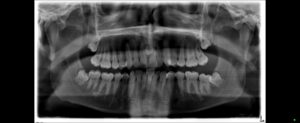Whenever it comes to teeth, the cavity is the unseen enemy, which always threatens you. Brush your teeth twice, or you will get a cavity. Eat more sweets, and you will get a cavity. And there are many more ways in which you are supposed to get a cavity. But what exactly is cavity is unknown to many.
What Is A Cavity?
In dental jargon, it is called caries or tooth decay. Cavity is permanent damage to the outer part of the teeth that looks like small holes or openings. There can be one or many cavities on a single tooth. It is a common problem around the globe and is found in almost most children, teenagers, and adults.
What Does A Cavity Look Like?
A cavity cannot always be seen. If it is large enough, you can see it, else an X-ray detects it. It looks like small black dots or holes. If it is only starting, it may look like a tiny dot. If you have ignored it for far too long, the entire tooth can go black, spreading it to the surrounding teeth. There is a possibility that you cannot see it, but your teeth are suffering side-by-side.
How Does it Form?
There are two types of bacteria in your mouth. Good bacteria are found in saliva and fluoride. The bad bacteria feed on sugar. With sugar, these bacteria form acids. These acids are bad for your tooth enamel and break the protective coating. To fight this acid, fluoride comes into action. It contains all the minerals which can reverse the damage caused by acid.
This is why it is always recommended to use a toothpaste or mouth rinse that contains fluoride. But if you eat lots of sugary and starch-loaded food, the fluoride can’t fight back, and thus, the enamel wears down, causing cavities. So, before you spot the dots, if you see white spots on your teeth, it is an indication that your protective minerals are running out.
How To Tell If You Have Cavity?
Several symptoms indicate the presence of cavities in your mouth. Look out for these-
- Sensitivity
If you feel a strange sensation every time you eat or drink something hot or cold, it is sensitivity, and it is the first sign of a cavity.
- General Pain
If you have constant throbbing pain in any of your teeth, whether mild or intense, it may be because of the cavity.
- Pain While Eating Or Drinking
If you feel pain while biting down your food, or if a drink causes pain in your tooth, it is the sign of a cavity.
- Discoloration
If you see a tooth getting yellow, brown, grey, or black, it is a cavity. It starts with spots that can quickly turn into complete tooth decay.
- Holes, Chips, Or Pits On Teeth
When your cavity has increased, you will start noticing it with the naked eye. You can see a black hole, a pit, or a chip on the tooth. It is the last nail in the coffin, and you must see a doctor firsthand.
- Bad Breath
If it’s a posterior tooth, sometimes, you may not see the decaying, but bad breath will indicate that there is a problem. If bad breath lasts longer, it may be the cavity.
Do you have any of these symptoms? If yes, find your dentist, because it’s the cavity.
What Are The Causes Of Cavity?
You learnt that it is formed by sugary and starchy food, but it is not the sole cause of cavities. There are others as well. Watch out for these if you want to prevent cavity–
- Improper Oral Hygiene
Oral hygiene takes the front of your mind only when there is a problem. If you brush twice daily, floss regularly, and rinse your mouth, you can avoid half of the dental problems, including the cavity.
- Dry Mouth
Sometimes, medication or lack of hydration may cause a dry mouth. Plaque and bacteria rush to your teeth in such a case and cause the cavity.
- Plaque Bacteria And Acid
Like it or not, bacteria live in your mouth. So, if you don’t brush properly or rinse with a fluoride-based toothpaste or mouthwash, the bad bacteria are going to attack.
- Plaque Formation
Paying regular visits to the dentist is also essential as he will remove any plaque building in your mouth. If you don’t get rid of your plaque regularly, it turns into tartar and causes cavities.
- Eating And Drinking
What you eat and drink plays a significant role in causing the cavity. If you love French fries, pasta, cold drinks, which are rich in carbs, and can’t help your sweet tooth, the sugar and starch will serve the bacteria and cause acid formation. Thus, it is essential to brush your teeth after eating sweets.
Conclusion
It is a major problem. Ignoring it for a longer time can only enhance the problem. It is always recommended to visit your dentist every six months. There are several signs and symptoms which hint at the presence of the cavity. If you see any of these, fix an interim appointment and get your teeth checked. You can save your teeth by showing up at a dental clinic in time.
SOURCES:
- Aas, J. A., Paster, B. J., Stokes, L. N., Olsen, I., & Dewhirst, F. E. (2005). “Defining the normal bacterial flora of the oral cavity”.
https://journals.asm.org/doi/abs/10.1128/jcm.43.11.5721-5732.2005 - Shafer, W. G., & Waldron, C. A. (1975). “Erythroplakia of the oral cavity”.
https://acsjournals.onlinelibrary.wiley.com/doi/abs/10.1002/1097-0142(197509)36:3%3C1021::AID-CNCR2820360327%3E3.0.CO;2-W - Kidd, E. A. M. (2004). “How ‘clean’must a cavity be before restoration?”.
https://www.karger.com/Article/Abstract/77770 - Montero, P. H., & Patel, S. G. (2015). “Cancer of the oral cavity”.
https://www.surgonc.theclinics.com/article/S1055-3207(15)00031-9/abstract



